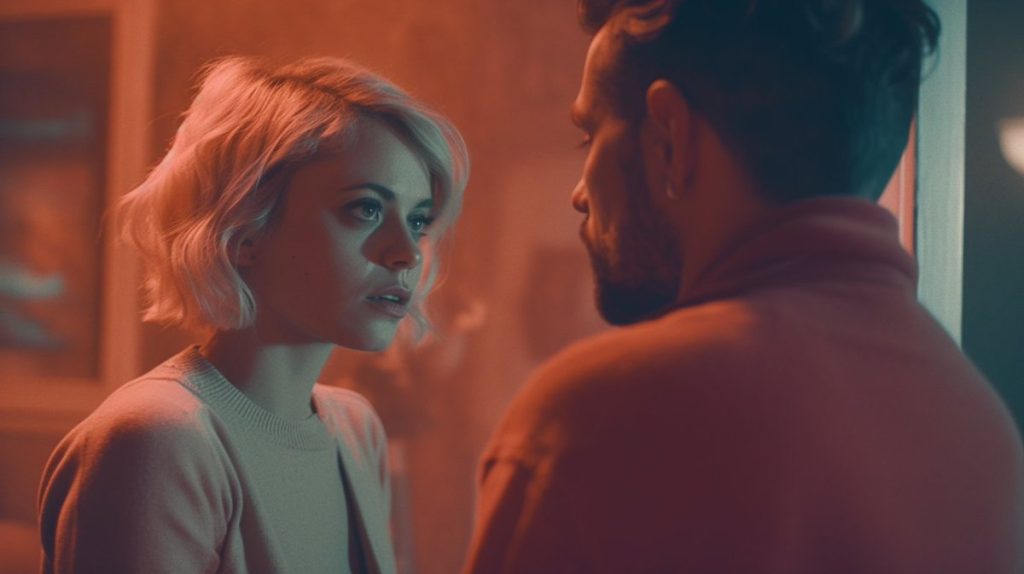You’ve known about Midjourney prompting and already generated images by Midjourney. Now you want to take your images up a notch by infusing more realism into your AI images. You’ve come to the right place. In this guide, we’ll walk you through the essentials, from choosing the right camera models and focal lengths to incorporating specific keywords that elevate the realism of your prompts. Let’s jump in and discover the secrets to your Midjourney prompts for realistic photos.

Choosing the Right Tools: Cameras and Focal Lengths
While mentioning camera models and focal lengths in Midjourney prompts might seem minor, it significantly enhances realism of your image results. These details bring your images to life.
Here is a short list of camera models that you can include in your Midjourney realistic prompts:
- Canon EOS R5
- Canon EOS R6
- Canon EOS 5D Mark IV
- Sony A7R III
- Sony A9
- Sony A6000
- Sony A6400
- Fujifilm X-T4
- Nikon D850
- Nikon Z7
While camera models matter, don’t forget to add details of focal lengths for realistic results.
Say you want to generate a realistic portrait of a person, then instead of just using the word ‘portrait’ in your prompts, specify the focal length to enhance precision. For portraits, the focal length of 85mm works the best. You can also experiment with other focal lengths like 35mm, 50mm, and 135mm to achieve varied effects in your AI-generated portraits.
For landscape images, some optimal choices are 14mm, 18mm, 21mm, and 24mm.
/imagine iPhone selfie, young couple at the coffee shop, relationship goals, happy couple, full of love, wholesome, spending time with your significant other, soulmates –ar 2:3 –v 5

/imagine photorealistic portrait of a young woman with red hair, shot with Canon EOS R5, 85mm lens, the woman is wearing a green dress looking directly into the camera, slight smile, gold earrings, charming –ar 2:3 –v 5

For those less familiar with photography, a focal length is the lens description in millimeters. When you specify a focal length in your prompts, you tell the AI how much of the scene to capture and the desired magnification.
Enhancing Realism with Specific Keywords
While camera types and focal lengths work wonders for the realism level of your Midjourney prompts for realistic photos, there are other groups of keywords worth considering too.
For instance, “sunrise on the moon” produces beautiful illustrations, but adding “sunrise on the moon stock photography” brings the image closer to everyday reality. If you see the foregrounds in each image, you’ll notice a heightened level of realism.
To further intensify the level of realism, include keywords like “tourist photo” for a relatable exploration experience. For an even more authentic feel, use words like “cinematic steel,” “cinematic lighting,” or “screen grab” to evoke real-world aesthetics, resulting in stunning, lifelike images.
You can also use keywords that are relevant to realism to bring your AI images closer to life. Consider adding descriptive words like:
- photorealistic
- detailed
- lifelike
- hyper-realistic
- super-realistic
- insanely detailed
- photorealistic image/portrait of
- rendered in hyper-realistic styles
/imagine Bora Bora, Canon EOS R6, 24mm lens, cinematic shot, overwater bungalows, beautiful resort, honeymoon destination, amazing day, great weather, sun is shining, clear water, insanely detailed, photorealistic –ar 16:9 –v 5

Create Cinematic Prompts with Splash Photography
In case you want to infuse a cinematic vibe into your images, effortlessly achieve it by incorporating the keyword “and splash.” This term is linked to a stock photography website widely-known for its cinematic aesthetics. By integrating this keyword into your photorealistic prompts, you can get fantastic results that highlight cinematic realism.
Adding Unexpectedness with Lomo Photography
For those aiming for images with a less polished and more spontaneous feel, including keywords like “Lomo photo” or “Lomo photography” can really do the trick. These keywords introduce an element of unpredictability, lending the images a less refined and more spontaneous feel. With this keyword in your prompts, your Midjourney images will come out more realistic, but with a distinctive and captivating aesthetic.
The Power of Reference Images in Midjourney
Of the many AI text-to-image generators out there, Midjourney stands out with its distinct capability to use images as references for generating fresh photos. This feature especially comes in handy when you want to replicate the style of a chosen photo in your Midjourney image results. For instance, you can provide an edited photo and instruct Midjourney to generate a new image “in the style of” your reference photo.
To use this feature, follow these three steps:
- Locate the URL of your reference photo.
- Use the /imagine command as usual. After the prompt box appears, drag the image file into the prompt box to add the image’s URL, or right-click and paste the link within the prompt box.
- Write the description text next to the URL and start generating image.
Midjourney will interpret the style of the reference image and generate a new photo that aligns with the reference style.

Experiment with –testp Parameter
Midjourney has a variety of settings that can affect the realism of the images it generates.
One of them is the –testp parameter, which allows you to use the Midjourney special photography-focused test model.
Wrapping up
Now that you’ve read through our article, we hope you’ve somehow “mastered” the art of Midjourney prompts for realistic photos.
You can now generate realistic and visually stunning images by understanding the importance of camera models, focal lengths, and keywords. It’s your turn to experiment, explore, and let your creativity flow as you embark on your Midjourney prompt adventures. Happy prompting!



